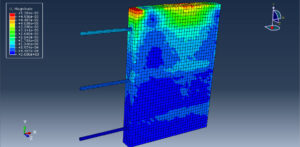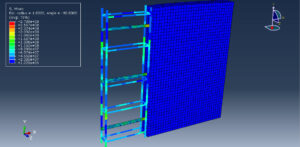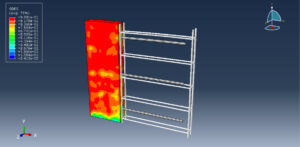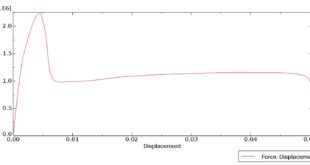Finite element modeling of precast wall panel connection under monotonic loading in Abaqus has been investigated during this tutorial. Both concrete walls are modeled as three-dimensional solid parts. The steel reinforcements are modeled as wire parts. The three solid steel bars are modeled as three-dimensional solid parts. You can see figures of the assembled parts below


Embracing precast reinforced concrete structures has imparted the construction industry towards an innovative method that is efficient, sustainable, and environmentally friendly. This innovative method of construction has combined several advantages such as i) better quality control, ii) lesser laborer’s involvement in the construction site, iii) shorter completion time, and iv) more economical on large-scale projects The precast reinforced concrete wall was adopted in residential building construction as it can effectively resist a combination of gravity load and lateral loads due to wind load or earthquake excitation. Besides, a precast reinforced concrete wall has high lateral stiffness and strength, which acts as a flexural member, so the lateral sway of buildings is no more of a significant concern. Thus, precast reinforced concrete walls are an effective structural system that resists lateral load and provides overall lateral stability to the entire structure. Furthermore, it is produced offsite in the form of wall panels due to certain limitations such as transportation, lifting equipment, and assembly processes in the construction site and jointed using a dry or wet connection. The connection between the precast wall panels plays a significant role in ensuring the integrity of the connected wall panels and the overall structural system
The Concrete Damaged Plasticity model is selected to define the concrete material. To model all steel members, the elastic-plastic model is considered. Both dynamic and static steps can be used, because of the cohesive interaction between the solid steel bar and the right concrete wall, an explicit step with mass scale technique is selected.
The surface-to-surface contact with friction behavior is considered between two concrete walls. The cohesive contact method is considered among the solid steel bars and concrete wall. Steel reinforcement is embedded inside the concrete hosts
Proper boundary conditions, loads, and meshes are assigned to all parts. After the simulation, all results such as stress, stain, tension and compression damage, cohesive interaction damage, force-displacement diagram, and others are available. You can see some figures for the results below








 Abaqus tutorials Abaqus tutorials
Abaqus tutorials Abaqus tutorials




